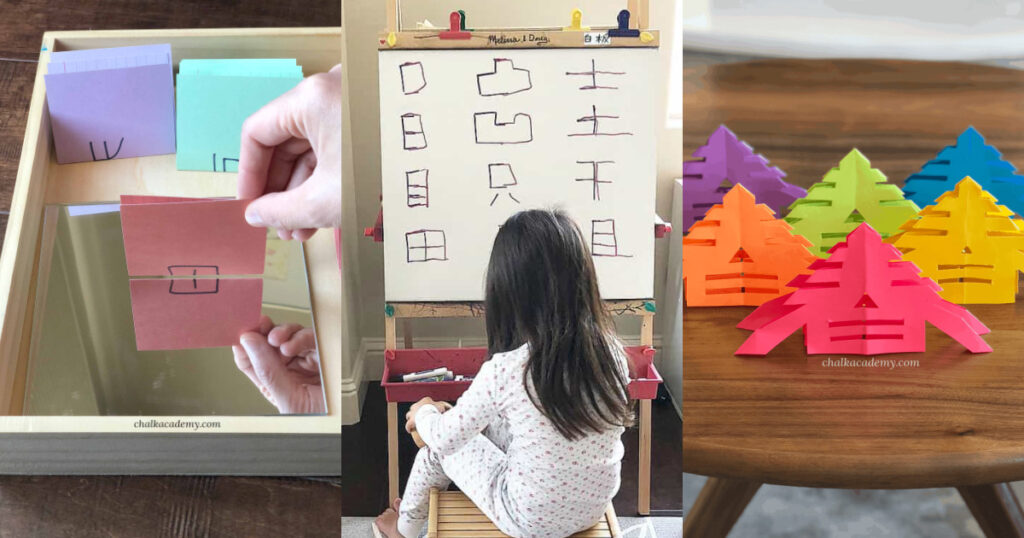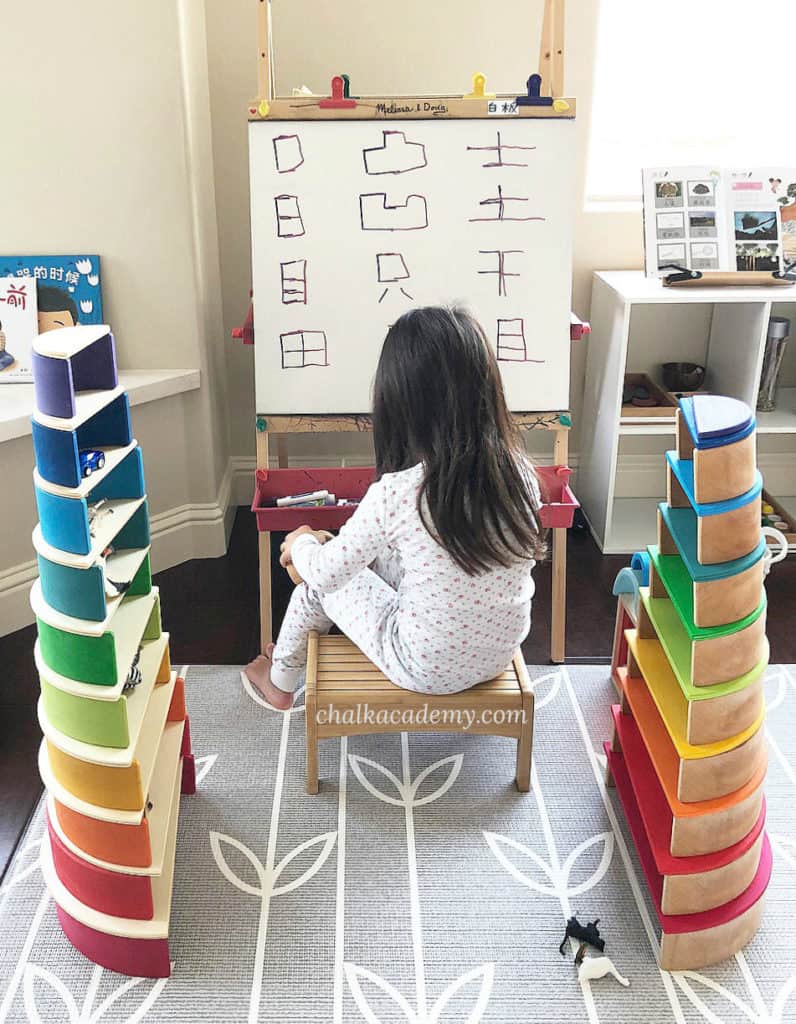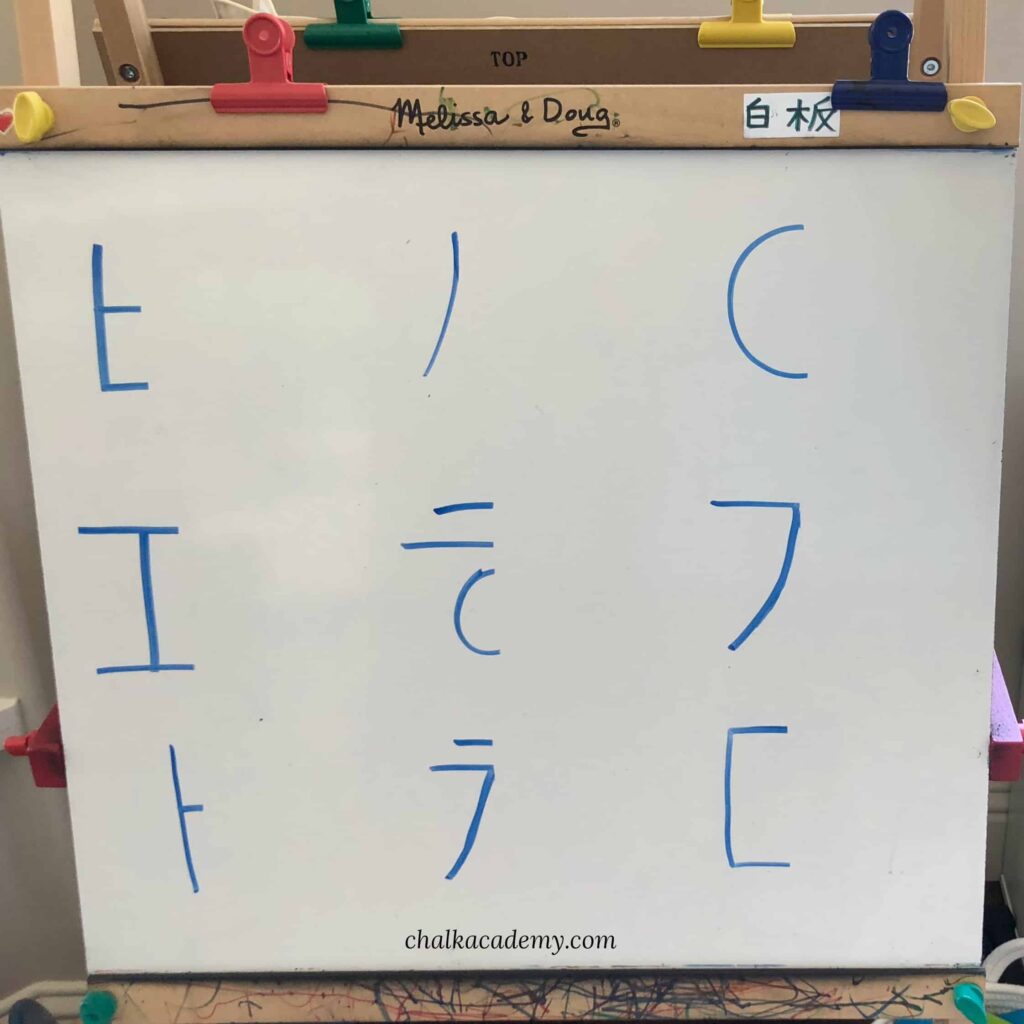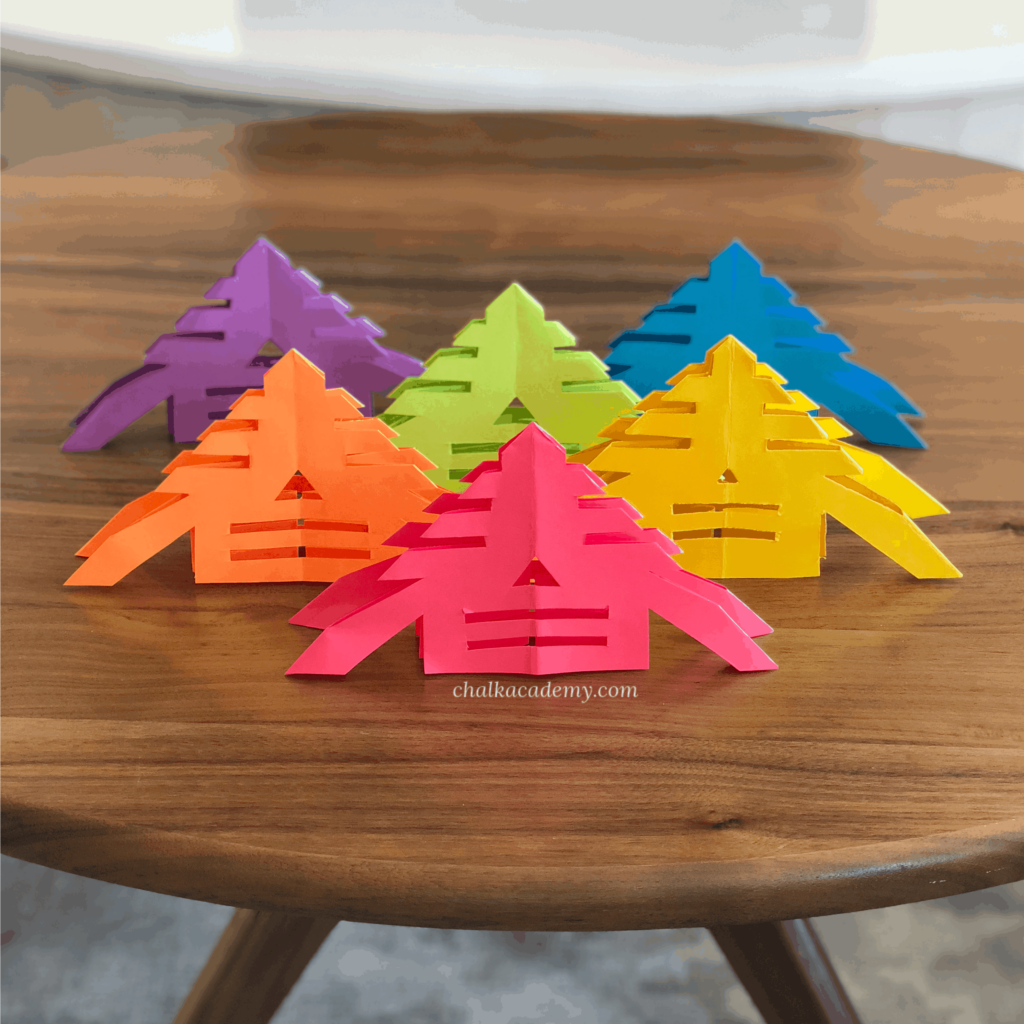Fun Symmetrical Chinese Characters Activities for Kids (VIDEO)

Since I’m teaching my kids Chinese as a minority language, I’m always brainstorming ways to make learning extra fun. Although handwritten Chinese characters are never perfectly symmetrical (in contrast to some digital fonts), many are almost mirror images around a vertical (eg, 大) or horizontal (eg, 区) axis. Exploring these nearly symmetrical Chinese characters has been a cool and helpful way to memorize Chinese characters.
Whether you’re a parent raising bilingual children or a language teacher for kids, these Chinese symmetry activities are simple enough to try at home or school.
Chalk Academy is reader-supported. Some of the links are affiliate links. When you buy something through an affiliate link, we may earn a very small commission at no cost to you. Details here.
Which Chinese characters are symmetrical?
Symmetry, defined as form with balanced proportions, is aesthetically pleasing and comforting in art, architecture, design, and poetry. In addition, symmetry is important in math and geometry.

In Chinese culture, balance and harmony are core elements. So it’s no surprise that symmetrical Chinese characters would be fascinating to explore.
Here is a list of common Chinese characters with vertical symmetry, horizontal symmetry, or both! These symmetrical Chinese characters are listed in alphabetical order based on Hanyu Pinyin.
List of Chinese characters with vertical symmetry
If a vertical line divides a Chinese character into two identical halves, this means that the lines goes from top to bottom and divides the word into mirror halves. The following Chinese characters have vertical symmetry.
- 凹 (Āo / Concave)
- 半 (Bàn / Half)
- 草 (Cǎo / Grass)
- 出 (Chū / Go out)
- 大 (Dà / Big)
- 呆 (Dāi / Stay)
- 豆 (Dòu / Beans)
- 父 (Fù / Father)
- 干 (Gàn/ Dry) – Note the traditional Chinese version 幹 has no line of symmetry
- 工 (Gōng / Work) as in 工作 (Gōngzuò / Work)
- 谷 (Gǔ / Grain, Cereal)
- 关 (Guān / Close) – Note the traditional Chinese version 關 has no line of symmetry
- 果 (Guǒ / Fruit)
- 合 (Hé / Close)
- 画 (Huà / Draw) – Note the traditional Chinese version 畫 has no line of symmetry
- 回 (Huí / Return)
- 金 (Jīn / Gold)
- 晶 (Jīng / Crystal)
- 具 (Jù / Tool) as in 玩具 (Wánjù / Toy)
- 口 (Kǒu / Mouth)
- 困 (Kùn / Sleepy)
- 里 (Lǐ / In)
- 量 (Liàng / Amount)
- 米 (Mǐ / Rice)
- 木 (Mù / Wood)
- 目 (Mù / Eye)
- 平 (Píng / Flat)
- 其 (Qí / Other)
- 且 (Qiě / And) as in 而且 (Érqiě / Moreover)
- 曲 (Qǔ / Song) as in 歌曲 (Gēqǔ / Song)
- 日 (Rì / Day)
- 山 (Shān / Mountain)
- 十 (Shí / Ten)
- 天 (Tiān / Sky)
- 田 (Tián / Field)
- 童 (Tóng / Child)
- 凸 (Tū / Convex)
- 土 (Tǔ / Soil)
- 王 (Wáng / King)
- 喜 (Xǐ / Like) as in 喜欢 / 喜歡 (Xǐhuān / Like)
- 幸 (Xìng / Fortunately)
- 凶 (Xiōng / Fierce)
- 羊 (Yáng / Sheep)
- 亚 / 亞 (Yà / Asian)
- 一二三 (Yī’èrsān / One, two, three)
- 早 (Zǎo / Morning)
- 只 (Zhǐ / Only, Measure word)
- 中 (Zhōng / Middle)
List of Chinese characters with horizontal symmetry
If a horizontal line divides a Chinese character into two identical halves, this means that the lines goes from left to right and divides the word into mirror halves. The following Chinese characters have horizontal symmetry.
- 工 (Gōng / Work) as in 工作 (Gōngzuò / Work)
- 回 (Huí / Return)
- 巨 (Jù / Huge)
- 口 (Kǒu / Mouth)
- 目 (Mù / Eye)
- 区 (Qū / Area) – Note the traditional Chinese version區 has no line of symmetry
- 日 (Rì / Day)
- 十 (Shí / Ten)
- 田 (Tián / Field)
- 王 (Wáng / King)
- 亞 (Yà / Asian) – Note the simplified Chinese Chinese version 亚 has no horizontal line of symmetry
Activities that introduce the concept of symmetry to kids
Symmetry is so fun to explore with children, and you can discover the concept of symmetry throughout your home. We’ve had fun creating mirror images with our face, body, and different objects! Here are a few fun hands-on symmetry activities that your children or students can try, too!
Mirror imitation symmetry activity for kids
This sounds so simple, but a mirror is one of the first ways that children learn about reflection. It is also a great way to teach kids emotions, facial expressions, and body language.
Here’s a silly activity that made us laugh so hard! My daughter and I sat face-to-face and pretended that we were each other’s mirror. We took turns moving ourselves and imitating each others facial expressions and body movements! When you talk about what emotions you’re mirroring, this activity can help kids have fun speaking Chinese, too.
Symmetry activities with different objects

Before discussing symmetrical Chinese characters, we also explored the concept of mirror symmetry around the house.
Indoors, we explored symmetry with colorful sticks, bingo chips, and pom poms. Outdoors, we used rocks and sticks to create different patterns.
These are all great mindfulness activities for kids to focus on color, position, and counting to create an accurate reflection.
To give kids a chance to take the lead, take turns setting up scenes for each other. Sometimes I would set it up the symmetry activity; other times, my children would arrange the initial design.
Invite your child to explore symmetry with different shapes, designs, and materials!
In this next photo, we created a Fourth of July symmetry activity with red white and blue colors.

Symmetry activities with Chinese characters for kids
When your child understands the concept of symmetry, you can look for symmetry in language, such as Chinese characters! Here are some of our favorite symmetry activities with Chinese characters.
Chinese characters mirror symmetry activity

This original activity has impressed a lot of Chalk Academy readers!
For this mirror activity, I wrote half of each Chinese character on index cards and folded them along the vertical line of symmetry. Then, we used this acrylic shatterproof mirror to see the full symmetrical Chinese character!
To keep the activity organized, I put the mirror and index cards on a small tray.
Take a look at my video of this Chinese symmetry activity in action.
Chinese characters symmetry writing activity

These same index cards can be used for more Chinese symmetry learning!
On the other half of the folded card, there is space for a child to fill in the other half of each Chinese character.
Since Chinese writing worksheets can be tedious and off-putting for many kids, this symmetry activity focuses on noticing patterns. It exposes children to writing while taking the pressure away from following Chinese stroke order.
You can also invite kids to write the first half of a word and give you homework to figure out second half!
Guess the symmetrical Chinese characters challenge

Like the above index cards mirror activity, I set up an invitation to write symmetrical Chinese characters on our easel.
Although this symmetry writing activity is essentially the same the index cards, a change of scenery can make an activity extra exciting for kids.
My kids took it one step further and tried to make their open-ended toys semi-symmetrical around the easel! I love how our symmetry discussions have inspired them to continue exploring through play.
Since we’re raising our children trilingual, we also tried this easel symmetry activity with our other minority language, Korean.
Here’s an example of how I set up a challenge to guess the Korean alphabet with vertical symmetry.
Can you guess which Korean Hangul letters are shown on our children’s easel?

Chinese paper cutting symmetry activity

For Chinese Lunar New Year, paper cutting has been a popular activity for centuries. This timeless activity celebrates the beauty of symmetrical Chinese characters.
For kids or even adult learners, paper-cutting is an amazing symmetry activity to feel and understand Chinese characters.
With the list of symmetrical Chinese characters at the beginning of this articles, you can create your own paper cutting activity!
In the colorful photo above, my family had fun using the 3-dimensional 春 (chūn / spring) paper cutting template from Miss Panda Chinese! Learn more about the symmetry activity from our list of the best activities for Chinese New Year!
Have you tried symmetry activities with Chinese characters or other languages with your kids?
We would love to hear what your kids thought of these symmetry activities! Can you think of other activities for symmetrical Chinese characters or other languages? Please share your experience in the comments below.
JUMPSTART GUIDE TO
TEACHING KIDS CHINESE
7 Days of Practical Tips Delivered to Your Inbox from Dr. Betty
CHALKACADEMY.COM
